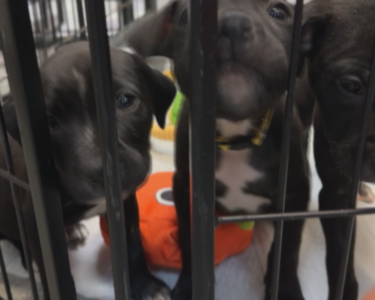Little “Bear,” was found by Street Cat Angels and is now at Ahimsa Haven where she awaits adoption. (COURTESY AHIMSA HAVEN)
DEAR PET TALK: I have noticed stray cats in my neighborhood. Should I be feeding them? CAT LOVER
DEAR CAT LOVER: Absolutely not. First, let’s look at your statement. You are stating the cats are strays, but is there a possibility they are owned by neighbors? Your first step is to be a good neighbor; ask in your neighborhood if the cats are known and owned. If the cats’ ears are “tipped” (meaning the tip has been removed), the cat has been spayed or neutered. Chances are good that a free-roaming cat that is spayed or neutered has an owner.
However, if you live in a neighborhood with many apartments, and the cat turns up at the end of the month, there is a possibility that the cat was left behind during a move or eviction. It is the landlord’s responsibility to check an apartment for any pets left behind: that is the law.
Now, if no one in the neighborhood says the cat belongs to them, your next step is to reach out to Animal Control. Every city and town in the state is required to provide those services to residents. Most Animal Control Officers (ACO) are part of the police department; sometimes the local board of health. If you can send a photograph, through email or texting, that will help them.
Some cities and towns have a volunteer group that supports the animal control officer (s). In Fitchburg and Leominster, the Animal Control Officers need to know about stray cats. And a group that also assists is Street Cat Angels, the “go-to” for any resident who sees a cat they do not know personally. SCA liaise with Animal Control, and area cat rescues and shelters, such as Ahimsa Haven, so that a true “stray cat” has a safe place.
The steps for determining whether a cat is a stray cat is as follows: ACO will check to see if the cat has a microchip. This is a tiny transmitter, the size of a grain of rice which will have owner information. If the cat is owned, and the owner can be found, the cat will be returned, and the ACO will have a conversation with the owner about the dangers a free-roaming cat will encounter (cars, wildlife).
Finally, your kindness is appreciated, but what’s critical is that communication is key among all parties.
Sally Cragin is the director of Be PAWSitive: Therapy Pets and Community Education. Visit us on Facebook and text questions to: 978-320-1335, or email sallycragin@gmail.com




